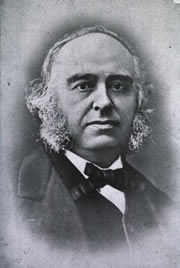| Peter Paul Broca (1824- 1880). Surgeon and anthropologist, Peter Paul Broca was born in Sainte-Foy-la-Grande in France. His earlier studies were in mathematics, but graduated in medicine, becoming a professor of clinical surgery. He became interested in anthropology and applied his mathematical expertise to the measurement and interpretation of his findings in comparative anatomy.
Broca was the founder of the first Anthropological Society of Paris, and used this venue to deliver most of his work. A prolific writer, Broca published over 500 scientific papers and several books. At one of the meetings of the society the discussion was directed to brain areas and speech. Broca had a patient with a condition that he referred to as aphemia (later known as aphasia); this patient died a few days later and upon autopsy, Broca was able to see a distinct cavity in the left lateral frontal lobe. Upon finding the same situation in another patient, he was able to describe the area of the brain responsible for speech, known today as "Broca's area" in the third left frontal brain convolution. Broca is responsible for naming many of the craniometric points in the human skull such as bregma, dacryon, inion, lambda, metopion, etc.
Broca was part of the discovery and study of the Neanderthal man. He remained the secretary of the Anthropological Society of Paris until his death in 1880.
|
 Original imagecourtesy of Original imagecourtesy of
National Institutes of Health. |



 Original image
Original image